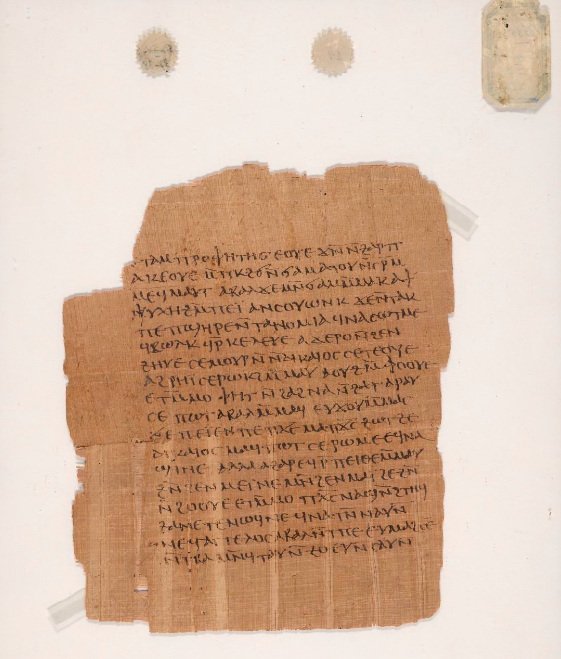After a recent conversation about early Coptic codices with Alin Suciu, I spent some time with the several distinct manuscripts catalogued under the designation “Copte 135” at the Bibliothèque nationale de France, the so-called Akhmim Papyri. There are some really fascinating things happening with these books in terms of codex construction.
I returned again to these codices a couple days ago after a stimulating talk by Anne Boud’hors in the the Workshop “Koptische Paläographie und Kodikologie.” She mentioned a very recent publication on these books:
Nathan Carlig, “The Achmîm Papyri: Codicological Study and Reconstruction Attempt,” pp. 115- 131 in Paola Buzi (ed.), Coptic Literature in Context (4th-13th cent.): Cultural Landscape, Literary Production, and Manuscript Archaeology (Rome: Edizioni Quasar di Severino Tognon S.r.l., 2020)
I’d like to add one detail to Carlig’s informative discussion of the make-up of one of these manuscripts, the leaves designated 135E, a small, square-ish format papyrus codex containing parts of the Apocalypse of Sophonias and the Apocalypse of Elias in Coptic (LDAB 108728).
The books seem to have been purchased as a group in 1884 or 1885 by Gaston Maspero in or around Akhmim (I need to read more about this). Georg Steindorff produced an edition and translation in 1899, and the BnF made good color images of this manuscripts available back in May (or I should say, the portions of these manuscripts that are in the care of the BnF; some leaves are in Berlin, P.Berol. inv. 1862; I cannot find images of them online; if anyone knows where to find them, please let me know).
What jumped out at me about these leaves was an indication of an unusual construction technique. Looking at the horizontal fibers of one of the leaves, everything appears basically normal at first glance. The leaf shows some stripping of horizontal fibers, but nothing out of the ordinary.

Things get interesting when we flip the leaf over and look at the vertical fibers:

It is clear that we’ve got a break in the writing surface. In both the upper half of the page and the lower half of the page, we have vertical fibers, but there is a distinct break showing that we are dealing with two discontinuous pieces of papyrus that have been pasted together, the top portion overlapping the bottom:

What we seem to have here are horizontal kolleseis (sheet joins) rather than the more typical vertical kolleseis that run up and down the height of the pages of many papyrus codices. This hypothesis would seem to be confirmed by the presence of similar horizontal breaks on several other leaves of the codex, though usually closer to the top of the leaf…

…or bottom of the leaf:

It is curious that in these latter examples the kollesis is bottom over top rather than (as in the first example above) top over bottom. In any event, it does look like these bifolia were cut from the roll in pieces that were the intended height of the bifolia:

It also looks like there is evidence for the use of the protokollon, the first sheet of a roll that was generally pasted on to the roll with the fibers oriented at a 90 degree angle relative to the rest of the sheets in the roll (again, see my earlier discussion here). Using the protokollon for a codex leaf can result (as it does here) in pages that have both horizontal fibers and vertical fibers on the same surface, as this detail image shows:

I have not yet been able to identify the other half of this bifolium among the Paris leaves. I wonder if it would be possible to reconstruct the roll from which these bifolia were cut (as Hugo Ibscher did for the Berlin Proverbs codex and as Stephen Emmel and others did for the Nag Hammadi codices)?
Off the top of my head, I know of only one other codex (or portion of a codex) that seems to have horizontal kolleseis, P.Bodmer 13+12, which I’ve discussed in an earlier post. I haven’t done a systematic search for this feature. It would be interesting to learn how frequent this phenomenon really is.

